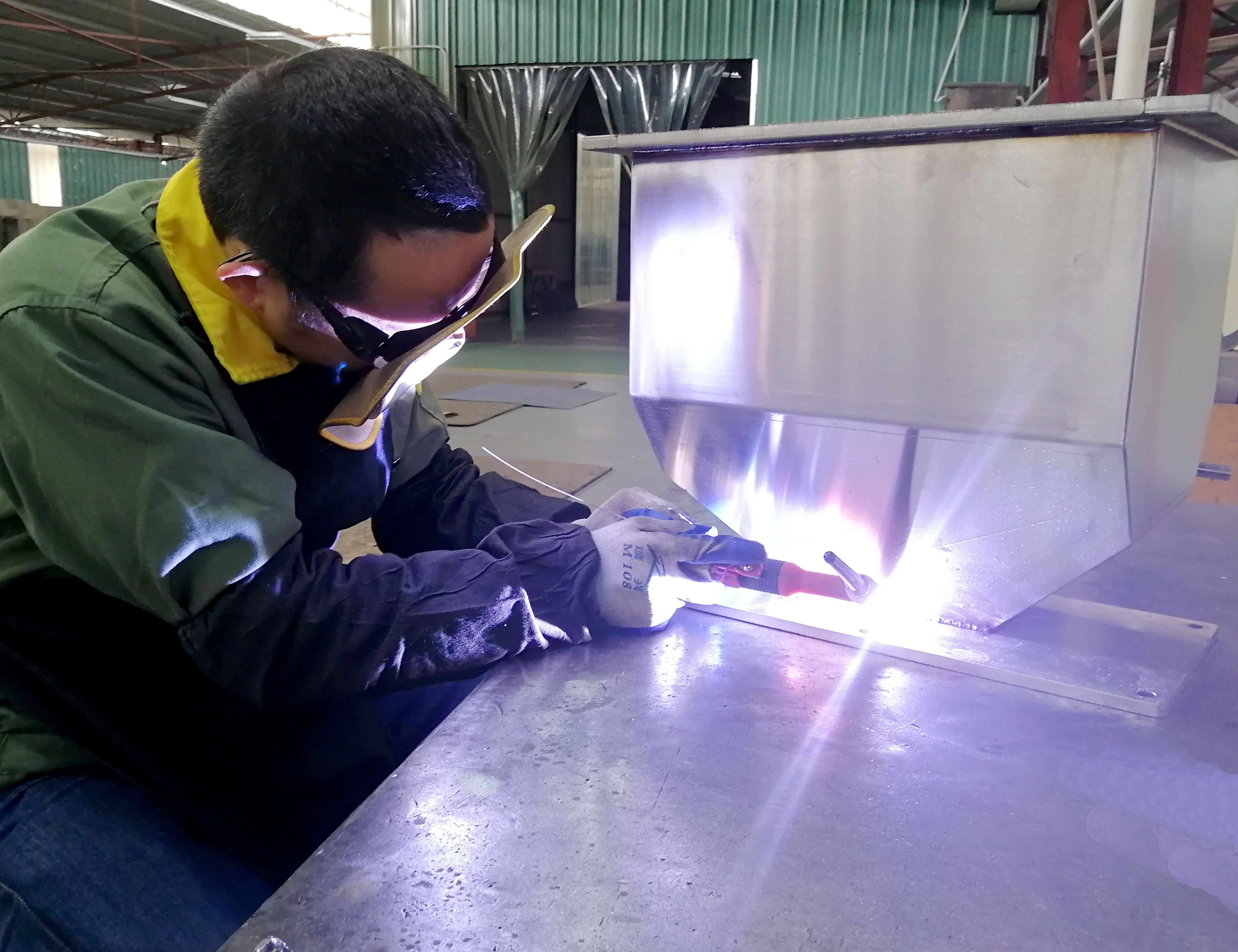Sheet metal manufacturing is a critical process in industries such as automotive, aerospace, construction, and electronics. The fabrication of sheet metal components often requires precise welding techniques to ensure structural integrity, durability, and aesthetic quality. Given the thin nature of sheet metal (typically ranging from 0.5 mm to 6 mm in thickness), selecting the appropriate welding method is crucial to prevent warping, burn-through, and distortion.
This article explores the most commonly used welding techniques in sheet metal manufacturing, their advantages, limitations, and best practices for achieving high-quality welds.
 Common Welding Methods for Sheet Metal
Common Welding Methods for Sheet Metal
1. Gas Metal Arc Welding (GMAW/MIG Welding)
Overview:
Gas Metal Arc Welding (GMAW), commonly known as MIG (Metal Inert Gas) welding, is one of the most popular welding methods for sheet metal due to its versatility and ease of use. It utilizes a continuously fed wire electrode and an inert shielding gas (such as argon or a mix of argon and CO₂) to protect the weld pool from contamination.
Advantages:
- High welding speed, making it efficient for mass production.
- Suitable for a wide range of sheet metal thicknesses.
- Minimal cleanup required compared to other methods.
Limitations:
- Requires proper gas shielding to prevent porosity.
- Not ideal for very thin metals (below 0.5 mm) due to the risk of burn-through.
Best Practices:
- Use a lower voltage setting to control heat input.
- Employ a pulsed MIG welding technique for better control on thin sheets.
2. Gas Tungsten Arc Welding (GTAW/TIG Welding)
Overview:
Gas Tungsten Arc Welding (GTAW), or TIG (Tungsten Inert Gas) welding, is a precision-based welding method ideal for thin sheet metal applications. It uses a non-consumable tungsten electrode and an inert shielding gas (typically argon) to produce high-quality, clean welds.
Advantages:
- Excellent control over heat input, reducing warping.
- Produces high-quality, aesthetically pleasing welds with minimal spatter.
- Suitable for welding a variety of metals, including aluminum, stainless steel, and copper.
Limitations:
- Slower than MIG welding, making it less efficient for large-scale production.
- Requires a high level of operator skill.
Best Practices:
- Use a foot pedal for precise amperage control.
- Employ a smaller diameter tungsten electrode for thin sheets.
3. Resistance Spot Welding (RSW)
Overview:
Resistance Spot Welding (RSW) is widely used in automotive and appliance manufacturing for joining overlapping sheet metal pieces. It works by applying pressure and an electric current to generate heat at the contact points, creating a series of small, strong weld nuggets.
Advantages:
- Extremely fast and efficient for high-volume production.
- No filler material required.
- Minimal distortion due to localized heating.
Limitations:
- Only suitable for overlapping joints.
- Requires access to both sides of the workpiece.
Best Practices:
- Optimize electrode force and current settings to prevent weak or excessive welds.
- Regularly maintain electrodes to ensure consistent weld quality.
4. Laser Beam Welding (LBW)
Overview:
Laser Beam Welding (LBW) is a high-precision method that uses a concentrated laser beam to fuse metal sheets. It is commonly used in industries requiring fine, high-strength welds, such as electronics and medical device manufacturing.
Advantages:
- Extremely narrow heat-affected zone (HAZ), reducing distortion.
- Capable of welding very thin materials (as low as 0.1 mm).
- High automation potential for precision applications.
Limitations:
- High initial equipment cost.
- Requires precise joint fit-up.
Best Practices:
- Use proper shielding gas to prevent oxidation.
- Implement real-time monitoring to ensure weld consistency.
5. Plasma Arc Welding (PAW)
Overview:
Plasma Arc Welding (PAW) is similar to TIG welding but uses a more constricted arc, allowing for deeper penetration and better control. It is often used for aerospace and high-precision sheet metal applications.
Advantages:
- Higher energy density than TIG, enabling faster welding speeds.
- Excellent for thin materials and intricate welds.
Limitations:
More complex setup compared to TIG.
Higher equipment costs.
Best Practices:
- Use a pilot arc for easier ignition.
- Maintain proper gas flow rates for stable plasma formation.
Factors to Consider When Choosing a Welding Method
When selecting a welding technique for sheet metal manufacturing, several factors must be considered:
- Material Thickness – Thinner materials require low-heat methods like TIG or laser welding.
- Production Volume – High-volume production benefits from faster methods like MIG or spot welding.
- Joint Design – Some methods (like spot welding) only work with overlapping joints.
- Aesthetic Requirements – TIG and laser welding provide cleaner, more visually appealing welds.
- Cost Considerations – Initial setup costs vs. long-term efficiency must be evaluated.
Sheet metal manufacturing demands careful selection of welding techniques to ensure structural integrity and efficiency. Methods such as MIG, TIG, spot welding, laser welding, and plasma welding each offer unique benefits depending on the application requirements. By understanding the advantages and limitations of each process, manufacturers can optimize their welding strategies for high-quality, cost-effective production. 









